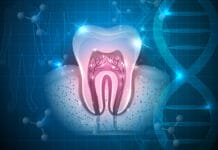We have all heard our fair share of myths growing up. My favorite myth my parents tried to sell me was a spin-off of the myth, “eating carrots improves your eyesight.” When I was a child, my favorite television show was Wonder Woman (it still is, if I’m being honest). At this time Lynda Carter was the star of the show, I thought she was stunning! Instead of the simple myth, “eating carrots improves your eyesight,” they told me, “eating carrots would make my eyes blue like Wonder Woman’s eyes.” I ate carrots every chance I could, then promptly checked the mirror to assess my eye color. You can imagine my dismay every time I looked in the mirror and saw hazel eyes staring back at me and not those beautiful baby blue eyes like my idol, Wonder Woman. I’m not sure how long it took before I realized all my carrot eating was in vain. I’m pretty sure by the third grade when I needed glasses it all became clear. Not only did all those carrots not turn my eyes blue, but they also didn’t improve my eyesight one bit!
I wish all myths were this easily debunked. Unfortunately, many myths are believed through adulthood and even passed on to the next generation. Some myths are fun to share and believe in, but it’s important to know the truth behind the myth. A myth is simply a way to come to terms with something we don’t quite understand. A myth is defined as a widely held, but false belief or idea. There seem to be a lot of myths floating around concerning dentistry. If you work in dentistry, you’ve certainly heard a few. The following are a few of my favorites.
“Too much candy rots teeth.”
Although sugar (and bacteria) play a role in tooth decay, a huge component is the pH level in your mouth. Healthy human saliva has a pH of around 7.5, saliva has a buffering effect in the mouth and helps neutralize acid. At a pH of 5.5 teeth begin to demineralize, this acidic environment is optimal for the bacteria that cause tooth decay. Sugar contributes to lowering pH in the mouth, however, it is important to add that sugar-free soft drinks, and even some bottled water, are just as much a contributing factor due to the high acidic level in the drink.
The goal in reducing cavities is to keep the mouth at a neutral pH as long as possible. Don’t sip on sugary or acidic beverages or snack on foods high in carbohydrates all day. If you want a treat, eat and drink it all at one time. It takes around 20 minutes for your mouth to come back to a neutral pH after it has been exposed to an acidic beverage or food high in carbohydrates. So, it is not the amount of candy you eat; it is the amount of time it takes to eat it that contributes to tooth decay.
“Gum disease is rare.”
I sincerely wish this one was true, but unfortunately, it is not. According to the CDC, there is a high prevalence of periodontal disease (gum disease) in the U.S. population. Data collected in 2009-2010, indicates an estimated 47.2% or 64.7 million American adults have mild, moderate or severe periodontitis. In adults 65 and older, prevalence rates increase to 70.1%.1 This myth is quite important to debunk because research shows the pathogens that cause periodontal disease are also associated with several systemic diseases including heart disease, stroke, Alzheimer’s disease, and certain types of cancer, to name a few.
“Cavities in baby teeth don’t matter.”
Tooth decay in children is painful, just as it is in adults. The anatomy of baby teeth is the same as permanent teeth. Baby teeth have nerves which can get infected and cause severe pain. Untreated cavities in baby teeth can lead to an inability to eat, sleep, and function well at school. Untreated, severely decayed teeth can lead to cellulitis (swelling of the face) which often requires emergency medical care and can be costly. Early loss of baby teeth results in shifting and crowding of permanent teeth; this can require orthodontic treatment to correct. I love the quote I read on the California Dental Associations website regarding children’s dental care, “For children’s oral health, treatment is good, prevention is better, and early prevention is best!”
“Teeth with fillings and crowns can’t get decay.”
A crown or filling itself cannot become decayed, however, the surrounding tooth structure is susceptible to decay. When decay occurs adjacent to a restoration, it is referred to as secondary caries. Secondary caries is responsible for 60% of all replacement restorations in the typical dental practice.2 Most fillings and crowns have a lifespan between 5 – 15 years, which makes both options a great choice when a restoration is warranted. It is important to keep these teeth clean and have regular dental visits with X-rays to check for any decay process that might start at the margins of the restoration.
“If my dental insurance doesn’t cover it, I don’t need it.”
I can assure you with great certainty that your insurance company has no idea what is in your best interest where your dental health is concerned. Dental insurance has changed very little since the mid to late ’70s. The maximum coverage has been the same for 40 years, yet the cost of providing dental services has increased, along with the cost of living. Insurance companies have frequency and age limits for most procedures. These limits are set regardless of your needs. Most dental providers assess your needs on an individual basis and recommend treatment, both restorative and preventative, that best fits your individual needs. If a procedure is recommended by your hygienist or dentist, especially if you have great trust in them, please do not allow your insurance company to dictate the treatment you receive.
“Adults don’t need fluoride.”
The first time I heard this one was several years ago. I had a patient who was high risk according to CAMBRA, so I recommended an in-office fluoride treatment. The patient looked at me, laughed and said, “I’m too old to have a fluoride treatment.” I’m not sure how the idea that as you age fluoride treatments are not beneficial came to be, but it is a complete fallacy. There is no age limit for getting cavities, therefore, there is no age limit for benefits of fluoride treatments. The CDC reports among adults aged 20-64, 91% had dental caries and 27% had untreated dental caries. About 1 in 5 adults 65 and older have untreated tooth decay.3 Clearly, tooth decay is not just a childhood disease, therefore, it makes sense to use the same effective preventative measures, age should not be a factor.
In the digital age, we have information overload. There is so much misinformation floating around the internet when researching anything always consider the source. The best way to debunk or confirm a medical or dental myth is by discussing it with a dental or medical professional you trust.
SEE ALSO: 5 Mouth Myths Debunked
DON’T MISS: 7 Reasons to Date or Marry a Dental Hygienist
Need CE? Check Out the Self-Study CE Courses from Today’s RDH!
Listen to the Today’s RDH Dental Hygiene Podcast Below:
Resources
- American Academy of Periodontology. Retrieved from https://www.perio.org/consumer/cdc-study.htm
- Si-su Mo, Wei Bao, Guang-yun Lai, Jun Wang, and Ming-yu Li. The Microflora Analysis of Secondary Caries Biofilm around Class I and Class II Composite and Amalgam Fillings. BMC Infect Dis. 2010; 10:241. Retrieved from https://www.ncbi.nlm.nih.gov/pmc/articles/PMC2931511/
- Centers for Disease Control and Prevention. Retrieved from https://www.cdc.gov/nchs/products/databriefs/db197.htm











